Solar eclipse of April 30, 1957
| Solar eclipse of April 30, 1957 | |
|---|---|
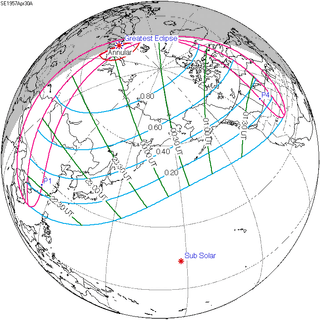 Map | |
| Type of eclipse | |
| Nature | Annular |
| Gamma | 0.9992 |
| Magnitude | 0.9799 |
| Maximum eclipse | |
| Duration | - |
| Coordinates | 70°36′N 40°18′E / 70.6°N 40.3°E |
| Max. width of band | - km |
| Times (UTC) | |
| Greatest eclipse | 0:05:28 |
| References | |
| Saros | 118 (65 of 72) |
| Catalog # (SE5000) | 9414 |
An annular solar eclipse occurred on April 30, 1957. A solar eclipse occurs when the Moon passes between Earth and the Sun, thereby totally or partly obscuring the image of the Sun for a viewer on Earth. An annular solar eclipse occurs when the Moon's apparent diameter is smaller than the Sun's, blocking most of the Sun's light and causing the Sun to look like an annulus (ring). An annular eclipse appears as a partial eclipse over a region of the Earth thousands of kilometres wide. Annularity was visible from northern Soviet Union (today's Russia) and Bear Island, the southernmost island of Svalbard, Norway.
Related eclipses
Solar eclipses of 1957-1960
This eclipse is a member of a semester series. An eclipse in a semester series of solar eclipses repeats approximately every 177 days and 4 hours (a semester) at alternating nodes of the Moon's orbit.[1]
| Solar eclipse series sets from 1957–1960 | ||||
|---|---|---|---|---|
| Descending node | Ascending node | |||
| Saros | Map | Saros | Map | |
| 118 |  April 30, 1957 Annular |
123 | 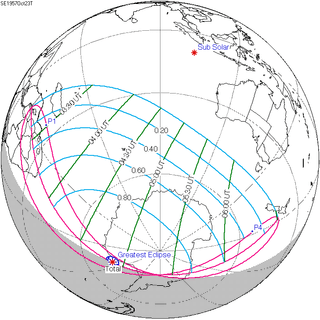 October 23, 1957 Total | |
| 128 | 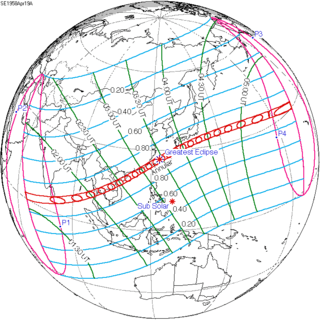 April 19, 1958 Annular |
133 |  October 12, 1958 Total | |
| 138 |  April 8, 1959 Annular |
143 | 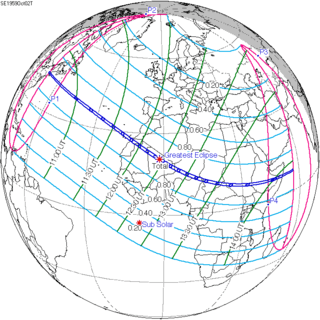 October 2, 1959 Total | |
| 148 | 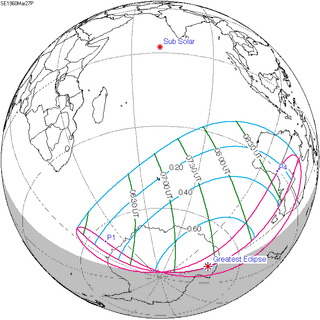 March 27, 1960 Partial |
153 |  September 20, 1960 Partial | |
Metonic series
The metonic series repeats eclipses every 19 years (6939.69 days), lasting about 5 cycles. Eclipses occur in nearly the same calendar date. In addition, the octon subseries repeats 1/5 of that or every 3.8 years (1387.94 days).
| 21 eclipse events, progressing from north to south between July 11, 1953 and July 11, 2029 | ||||
|---|---|---|---|---|
| July 10-11 | April 29-30 | February 15-16 | December 4 | September 21-23 |
| 116 | 118 | 120 | 122 | 124 |
 July 11, 1953 |
 April 30, 1957 |
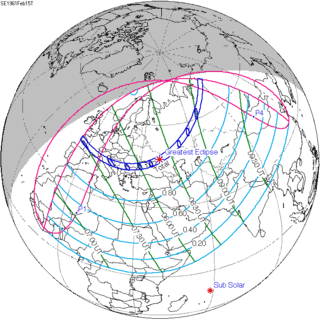 February 15, 1961 |
 December 4, 1964 |
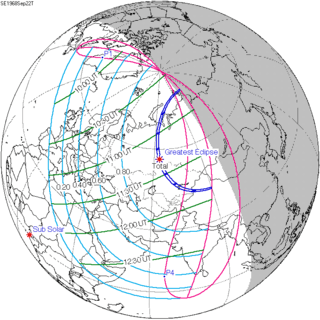 September 22, 1968 |
| 126 | 128 | 130 | 132 | 134 |
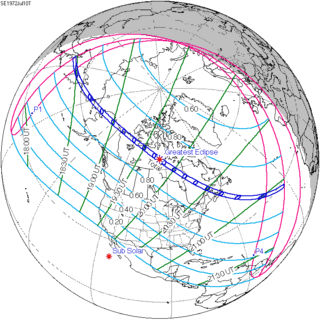 July 10, 1972 |
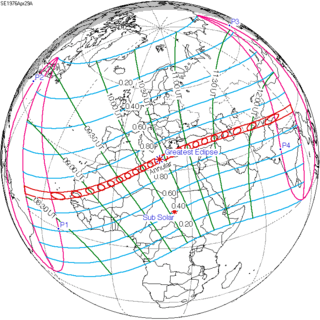 April 29, 1976 |
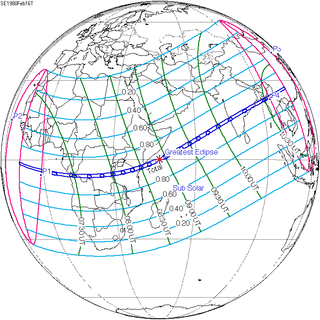 February 16, 1980 |
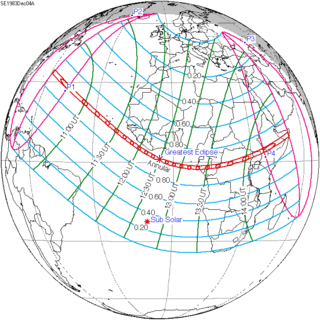 December 4, 1983 |
 September 23, 1987 |
| 136 | 138 | 140 | 142 | 144 |
 July 11, 1991 |
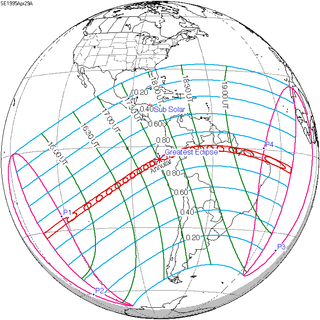 April 29, 1995 |
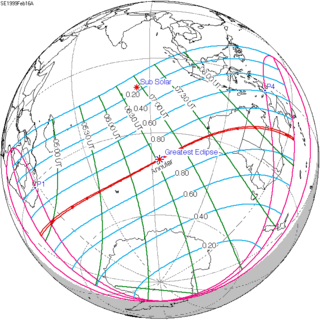 February 16, 1999 |
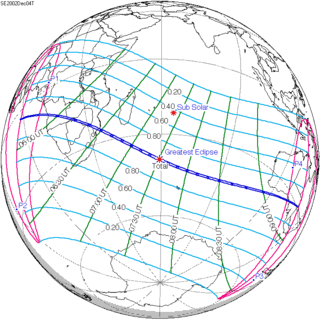 December 4, 2002 |
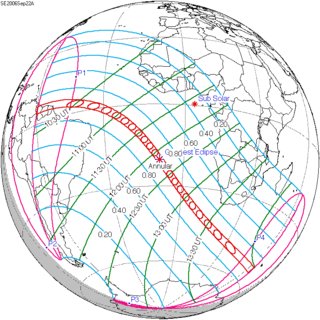 September 22, 2006 |
| 146 | 148 | 150 | 152 | 154 |
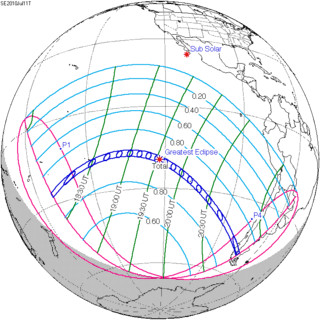 July 11, 2010 |
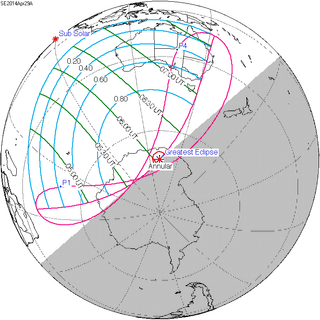 April 29, 2014 |
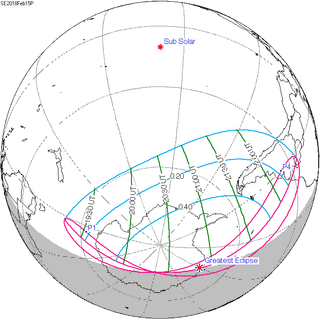 February 15, 2018 |
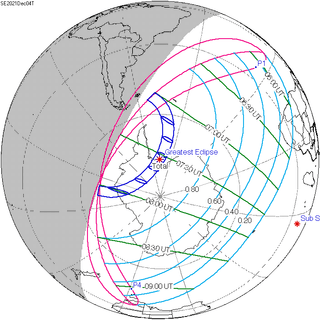 December 4, 2021 |
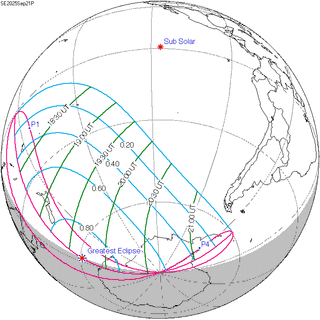 September 21, 2025 |
| 156 | ||||
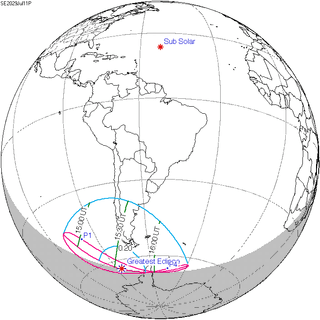 July 11, 2029 | ||||
Notes
- ↑ van Gent, R.H. "Solar- and Lunar-Eclipse Predictions from Antiquity to the Present". A Catalogue of Eclipse Cycles. Utrecht University. Retrieved 6 October 2018.
References
- Earth visibility chart and eclipse statistics Eclipse Predictions by Fred Espenak, NASA/GSFC
| Wikimedia Commons has media related to Solar eclipse of 1957 April 30. |
